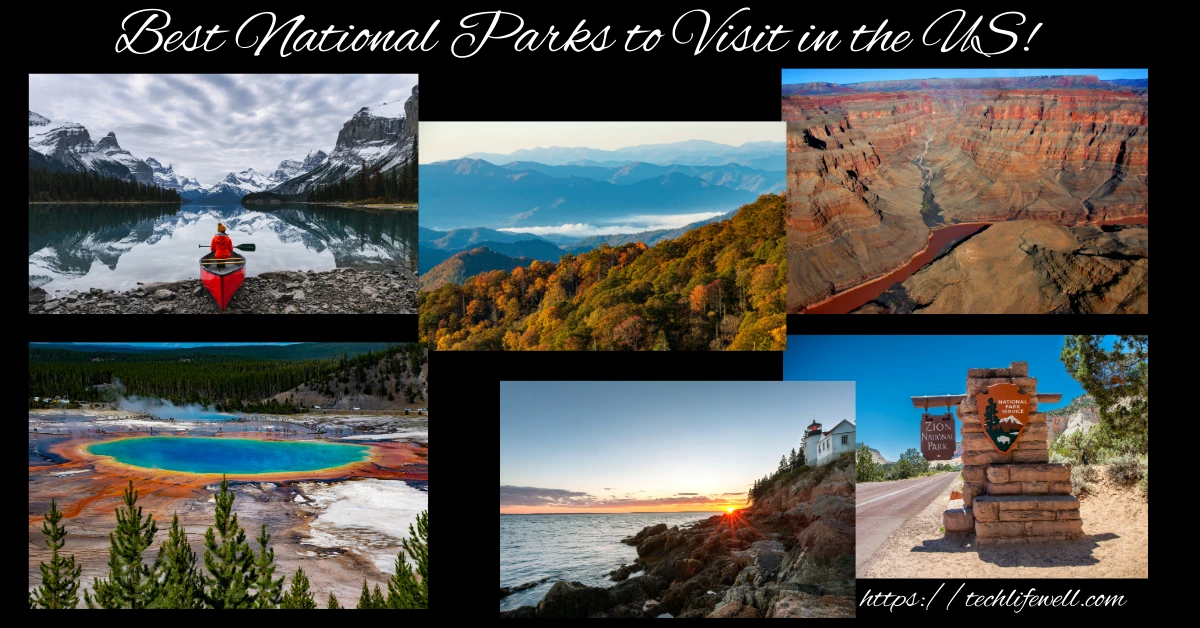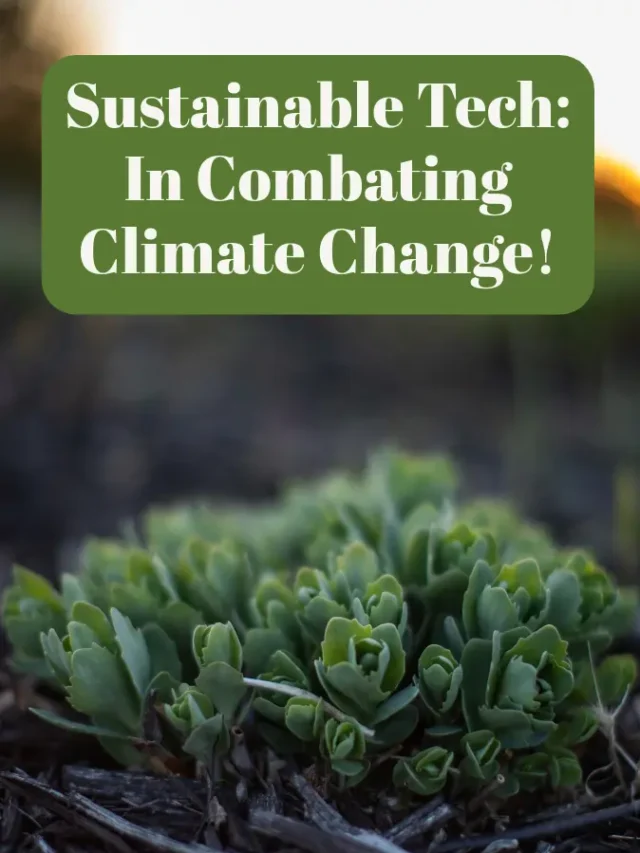Table of Contents:
Best National Parks!
Related Stories
Discover the best national parks to visit in the US with our detailed guide. From the iconic Yellowstone to the stunning Yosemite, explore the top national parks in California and beyond. Learn about the best time to visit, locations, and why each park is must-see. Whether you’re wondering how many national parks there in the US are or planning your next adventure, this blog post covers everything you need to know about the best national parks in the country.
The United States is home to some of the most breathtaking natural landscapes in the world, and its national parks are a testament to the country’s commitment to preserving these treasures. With over 60 national parks spread across the country, each offering unique experiences, it can be overwhelming to decide which ones to visit.
In this blog post, we’ll explore the best national parks to visit in the US, including the best national parks in California, and provide you with all the information you need to plan your trip. Whether you’re a seasoned hiker, a wildlife enthusiast, or simply someone who loves to soak in the beauty of nature, this guide will help you discover the best national parks the US has to offer. #bestnationalparks #nationalparks #summertime #dayout #hiking
FAQ’s:
How many national parks are in the US?
There are 63 national parks in the United States as of 2023.
Which state has the most national parks?
California has the most national parks, with 9 (Yosemite, Sequoia, Kings Canyon, Joshua Tree, Death Valley, Channel Islands, Redwood, Pinnacles, and Lassen Volcanic).
Are dogs allowed in national parks?
Dogs are allowed in most national parks but are restricted to specific areas like campgrounds, parking lots, and paved trails. They must be leashed at all times. Check individual park rules before visiting.
How many national parks are in California?
California has 9 national parks, the most of any state.
Which is the most visited national park in the US?
Great Smoky Mountains National Park is the most visited national park in the US, attracting over 12 million visitors annually.
Where to find a national parks map?
You can find national parks maps on:
Visitor centers at individual national parks.
The National Park Service (NPS) website: https://www.nps.gov
USGS Maps: https://www.usgs.gov
National Geographic Maps: https://www.natgeomaps.com
List of the Best National Parks to Visit in the US!
1. Yellowstone National Park
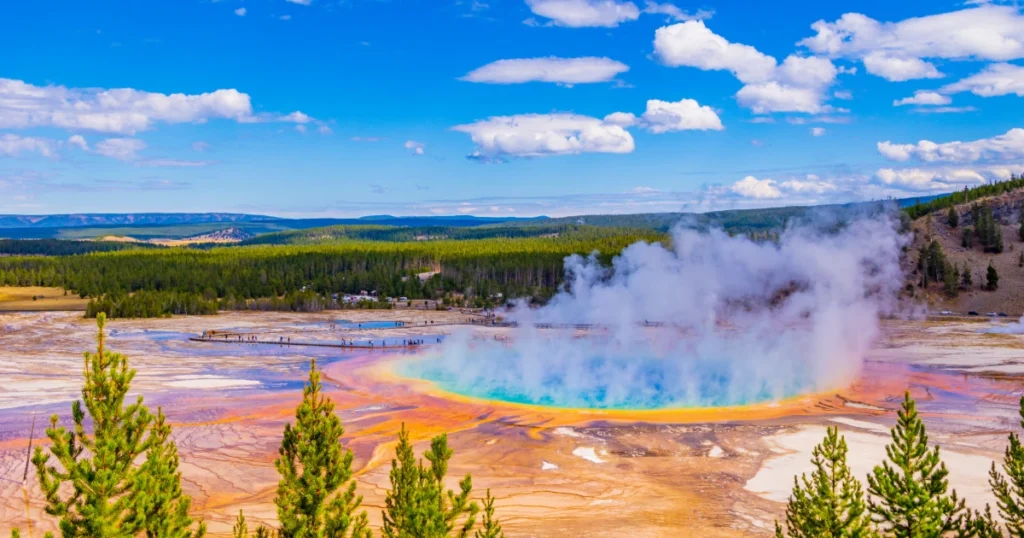
Location: Wyoming, Montana, Idaho
Best Time to Visit: April to May, September to October
Why Visit: Yellowstone is the first national park in the world and is famous for its geothermal features, including the iconic Old Faithful geyser. The park is also home to a diverse range of wildlife, including bison, elk, and grizzly bears.
Details:
Yellowstone National Park spans over 2.2 million acres and offers a variety of activities, from hiking and camping to wildlife watching and photography. The park’s geothermal features, such as hot springs, mud pots, and fumaroles, are must-see.
The Grand Prismatic Spring, with its vibrant colors, is one of the most photographed spots in the park. Yellowstone Lake, one of the largest high-elevation lakes in North America, offers opportunities for boating and fishing. The park’s vast wilderness areas provide a chance to experience the raw beauty of nature, with opportunities to see wolves, bison, and other wildlife in their natural habitat.
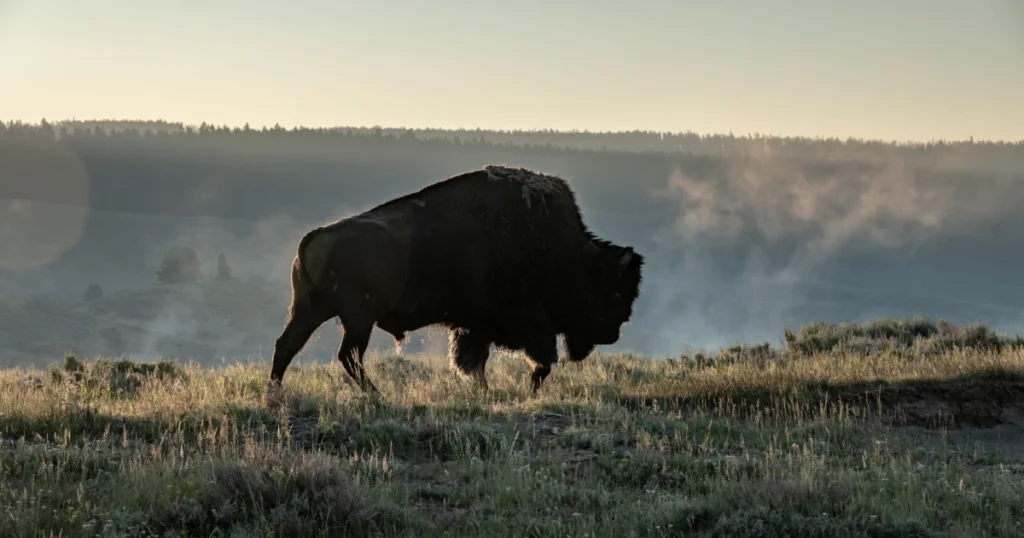
Important Tips:
Be prepared for changing weather conditions, as temperatures can vary significantly throughout the day.
Stay on designated trails to protect the fragile geothermal areas.
Book accommodations well in advance, especially during peak season.
Gear to Carry:
Layered Clothing: Weather can change rapidly; pack layers to stay comfortable with layered clothing.
Hiking Boots: Durable and waterproof hiking boots for varied terrain.
Bear Spray: Essential for safety in bear country.
Binoculars: Binoculars for wildlife watching.
Reusable Water Bottle: Stay hydrated; refill stations are available.
External Reference Links:
Yellowstone National Park Official Website
2. Yosemite National Park
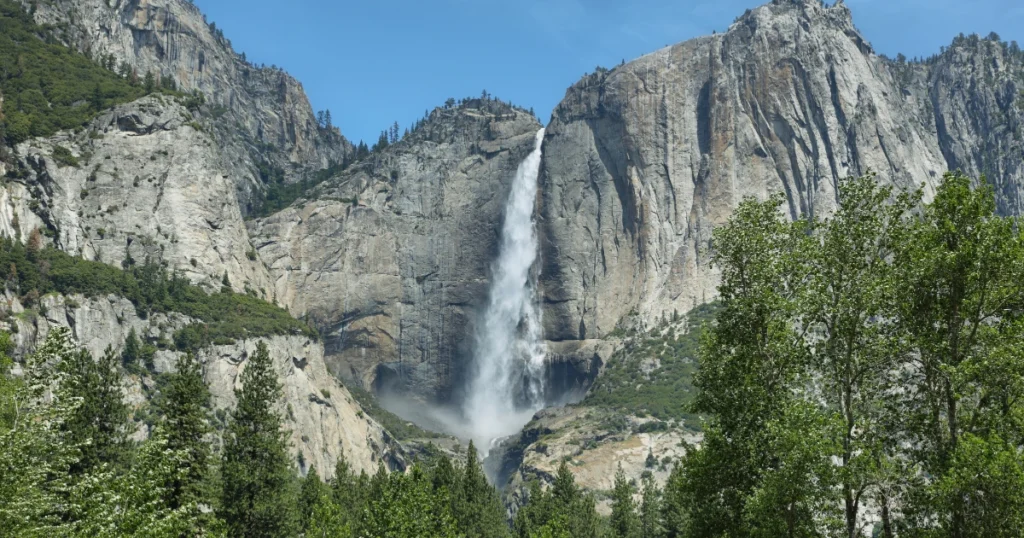
Location: California
Best Time to Visit: May to September
Why Visit: Yosemite is one of the best national parks in California, known for its towering granite cliffs, waterfalls, and ancient sequoia trees. It’s a paradise for hikers, climbers, and nature lovers.
Details:
Yosemite National Park covers nearly 1,200 square miles and is home to iconic landmarks such as Half Dome, El Capitan, and Yosemite Falls. The park offers a range of activities, from easy walks to challenging hikes, and is a popular destination for rock climbing.
The Mariposa Grove of Giant Sequoias is a must-see, with some of the largest trees in the world. Yosemite Valley, with its stunning views of granite cliffs and waterfalls, is the heart of the park and offers numerous trails and viewpoints. The park’s high country, including Tuolumne Meadows, provides a different perspective with its alpine landscapes and pristine lakes.
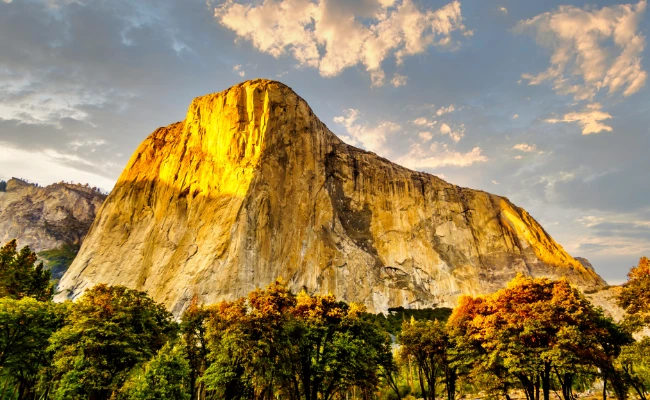
Important Tips:
Visit early in the morning to avoid crowds and secure parking.
Be bear-aware and store food properly to avoid attracting wildlife.
Check for road closures and trail conditions before your visit.
Gear to Carry:
Daypack: For carrying essentials on hikes.
Trekking Poles: Helpful for steep and uneven trails.
Water Filter: Ensure access to clean water on long hikes.
Headlamp: For early morning or late evening activities.
Camera: Capture the stunning landscapes.
External Reference Links:
3. Grand Canyon National Park
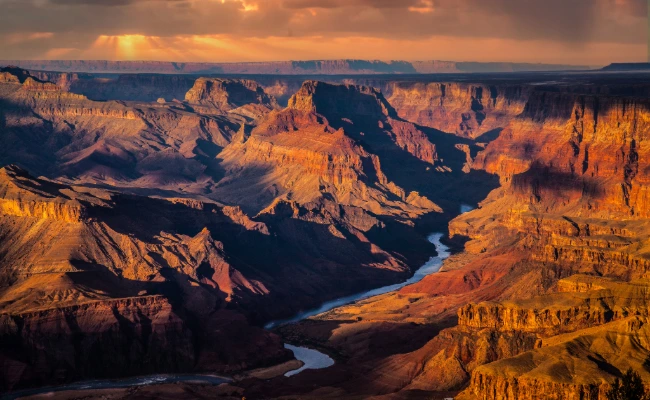
Location: Arizona
Best Time to Visit: March to May, September to November
Why Visit: The Grand Canyon is one of the most famous natural wonders in the world, offering breathtaking views and a glimpse into the Earth’s geological history.
Details:
Grand Canyon National Park encompasses over 1.2 million acres and features the massive Grand Canyon, which is up to 18 miles wide and over a mile deep. The park offers a variety of activities, including hiking, rafting, and scenic drives along the South Rim.
The Bright Angel Trail and South Kaibab Trail are popular routes for descending into the canyon, offering stunning views and a chance to experience the canyon’s unique geology up close. The North Rim, less visited but equally stunning, provides a different perspective with its lush forests and cooler temperatures. The Colorado River, which carved the canyon over millions of years, offers opportunities for rafting and kayaking.
Important Tips:
Stay hydrated and wear sunscreen, as the desert climate can be harsh.
Plan your hikes carefully, as the canyon’s steep trails can be challenging.
Consider visiting the less crowded North Rim for a different perspective.
Gear to Carry:
Sun Protection: Hat, sunglasses, and sunscreen for sun protection.
Hydration System: Water bladder or bottles with a carrying system.
Hiking Shoes: Sturdy and comfortable for rocky terrain.
First Aid Kit: For minor injuries and emergencies.
Map and Compass: Essential for navigation, especially on less-traveled trails.
External Reference Links:
4. Zion National Park

Location: Utah
Best Time to Visit: April to May, September to October
Why Visit: Zion is known for its stunning red rock formations, narrow slot canyons, and diverse wildlife. It’s a favorite destination for hikers and photographers.
Details:
Zion National Park covers over 146,000 acres and features iconic hikes such as The Narrows and Angels Landing. The park’s unique landscape, shaped by the Virgin River, offers endless opportunities for exploration and adventure. The Narrows, a hike through the narrowest section of Zion Canyon, involves wading through the river and offers a unique and immersive experience. Angels Landing, with its steep and exposed trail, provides breathtaking views of the canyon below. The park’s diverse ecosystems, from desert lowlands to forested highlands, support a wide range of plant and animal life, making it a great destination for wildlife enthusiasts.
Important Tips:
Use the park’s shuttle system to avoid traffic and parking issues.
Be prepared for extreme temperatures, especially in the summer.
Obtain permits in advance for popular hikes like The Narrows.
Gear to Carry:
Water Shoes: Essential for hiking The Narrows.
Dry Bag: To keep your belongings, dry during water hikes.
Trekking Poles: Helpful for stability in the river.
Lightweight Clothing: Breathable and quick-drying for hot weather.
Snacks and Energy Bars: Keep your energy levels up during long hikes.
External Reference Links:
5. Rocky Mountain National Park
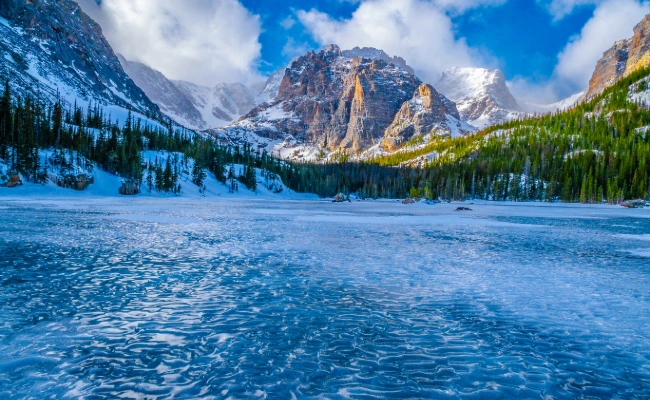
Location: Colorado
Best Time to Visit: June to September
Why Visit: Rocky Mountain National Park is a haven for outdoor enthusiasts, offering stunning mountain scenery, alpine lakes, and abundant wildlife.
Details:
The park spans over 265,000 acres and features over 300 miles of hiking trails, ranging from easy walks to challenging climbs. Trail Ridge Road, the highest continuous paved road in the US, offers breathtaking views of the park’s diverse landscapes. The park’s alpine tundra, with its unique flora and fauna, is a highlight for many visitors. Bear Lake, a popular destination, offers easy access to several scenic trails, including the hike to Emerald Lake. The park’s diverse ecosystems, from montane forests to alpine meadows, support a wide range of wildlife, including elk, moose, and bighorn sheep.
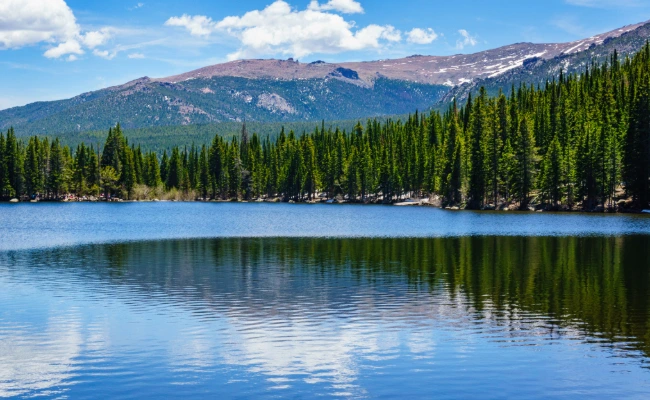
Important Tips:
Be prepared for sudden weather changes, especially at higher elevations.
Start hikes early to avoid afternoon thunderstorms.
Respect wildlife and keep a safe distance from animals.
Gear to Carry:
Rain Gear: Waterproof jacket and pants for sudden rain showers.
Insulated Jacket: For cooler temperatures at higher elevations.
Hiking Boots: Sturdy and waterproof for varied terrain.
Bear Canister: Required for backcountry camping to store food.
Sunscreen and Lip Balm: High elevation increases UV exposure.
External Reference Links:
6. Acadia National Park
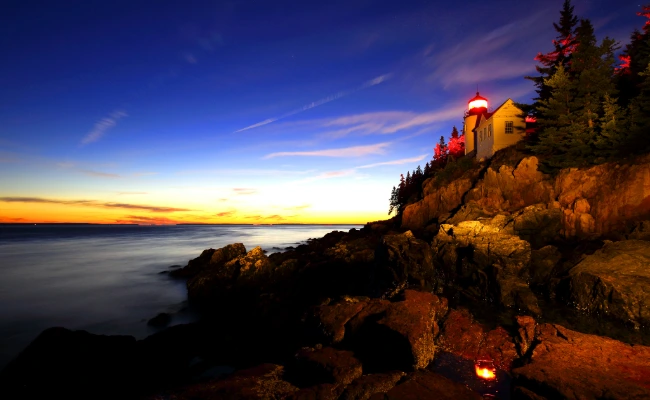
Location: Maine
Best Time to Visit: June to October
Why Visit: Acadia is the only national park in the Northeast and is known for its rugged coastline, granite peaks, and dense forests.
Details:
Acadia National Park covers over 49,000 acres and offers a variety of activities, including hiking, biking, and kayaking. Cadillac Mountain, the highest point on the East Coast, is a popular spot for watching the sunrise. The park’s carriage roads, built by John D. Rockefeller Jr., offer a unique biking experience through the park’s scenic landscapes. The park’s coastline, with its rocky shores and tidal pools, is a great place to explore marine life. The park’s diverse ecosystems, from coastal areas to mountain peaks, support a wide range of plant and animal life, making it a great destination for nature lovers.
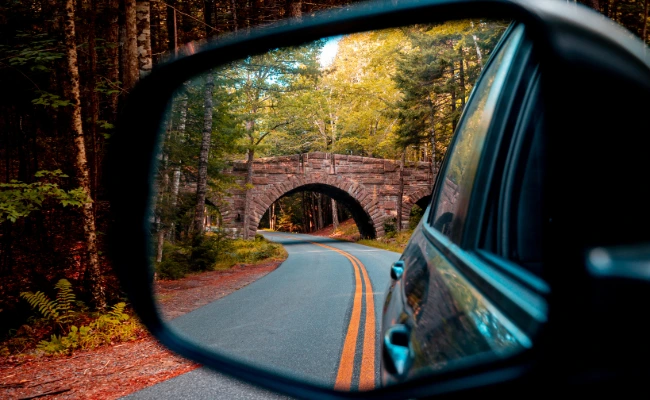
Important Tips:
Visit during the fall to experience the stunning foliage.
Be prepared for cool temperatures, even in the summer.
Explore the park’s carriage roads for a unique biking experience.
Gear to Carry:
Bike and Helmet: For exploring the carriage roads.
Warm Layers: Even in summer, temperatures can be cool, especially in the morning.
Tide Chart: For exploring tidal pools safely.
Binoculars: For birdwatching and spotting marine life view.
Picnic Supplies: Enjoy a meal with a view at one of the park’s many scenic spots.
External Reference Links:
7. Great Smoky Mountains National Park
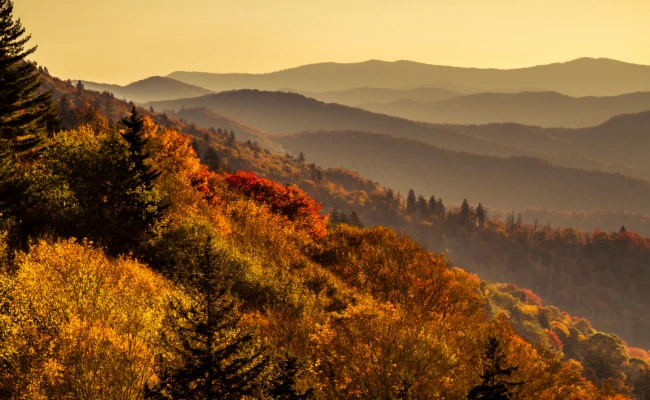
Location: Tennessee, North Carolina
Best Time to Visit: June to October
Why Visit: The Great Smoky Mountains is the most visited national park in the US, known for its lush forests, diverse wildlife, and rich cultural history.
Details:
The park covers over 522,000 acres and features over 800 miles of hiking trails, including a section of the Appalachian Trail. Clingmans Dome, the highest point in the park, offers panoramic views of the surrounding mountains. The park’s diverse ecosystems, from lowland forests to high-elevation spruce-fir forests, support a wide range of plant and animal life, including black bears, deer, and wild turkeys. The park’s historic cabins and churches offer a glimpse into the region’s Appalachian culture and history.
Important Tips:
Be prepared for crowded conditions, especially during peak season.
Visit during the fall for stunning foliage and fewer crowds.
Explore the park’s historic cabins and churches for a glimpse into Appalachian culture.
Gear to Carry:
Rain Gear: Frequent rain showers are common.
Hiking Boots: For varied terrain and long hikes.
Wildflower Guide: The park is known for its diverse flora.
Camera: Capture the stunning landscapes and wildlife.
Bear Spray: For safety in bear country.
External Reference Links:
Great Smoky Mountains National Park Official Website
8. Arches National Park
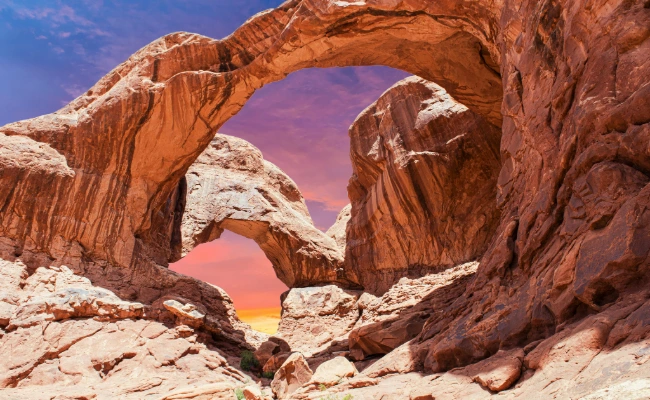
Location: Utah
Best Time to Visit: April to May, September to October
Why Visit: Arches is famous for its over 2,000 natural sandstone arches, including the iconic Delicate Arch.
Details:
The park covers over 76,000 acres and offers a variety of hiking trails, ranging from easy walks to more strenuous hikes. The park’s unique rock formations and stunning desert landscapes make it a favorite destination for photographers. Delicate Arch, one of the most famous landmarks in the park, is a must-see and offers a challenging but rewarding hike. The park’s Fiery Furnace, a maze of narrow canyons and towering fins, offers a unique and adventurous hiking experience. The park’s night skies, with minimal light pollution, are perfect for stargazing.
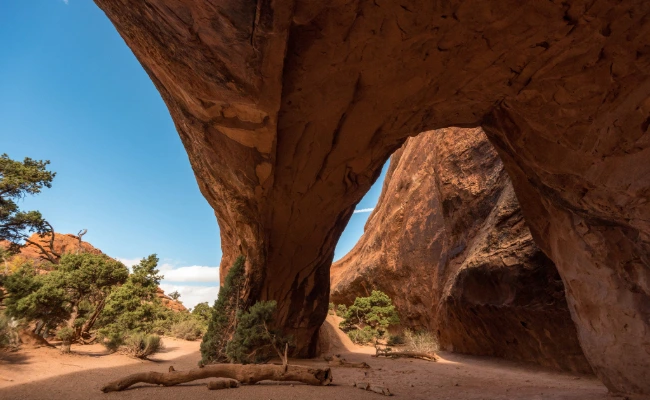
Important Tips:
Stay hydrated and wear sunscreen, as the desert climate can be harsh.
Visit early in the morning or late in the afternoon to avoid the heat and crowds.
Be respectful of the fragile desert environment and stay on designated trails.
Gear to Carry:
Sun Protection: Hat, sunglasses, and sunscreen.
Hydration Pack: Essential for staying hydrated in the desert.
Sturdy Hiking Shoes: For rocky and uneven terrain.
Headlamp: For early morning or late evening hikes.
Star Chart or App: For stargazing at night.
External Reference Links:
9. Glacier National Park

Location: Montana
Best Time to Visit: June to September
Why Visit: Glacier is known for its stunning mountain scenery, pristine lakes, and abundant wildlife, including grizzly bears and mountain goats.
Details:
The park covers over 1 million acres and features over 700 miles of hiking trails. The Going-to-the-Sun Road, a 50-mile scenic drive, offers breathtaking views of the park’s diverse landscapes. The park’s alpine meadows, with their vibrant wildflowers, are a highlight for many visitors. The park’s glaciers, though shrinking, are a reminder of the park’s glacial past and offer a unique opportunity to see these ancient ice formations. The park’s diverse ecosystems, from montane forests to alpine tundra, support a wide range of wildlife, including grizzly bears, mountain goats, and bighorn sheep.
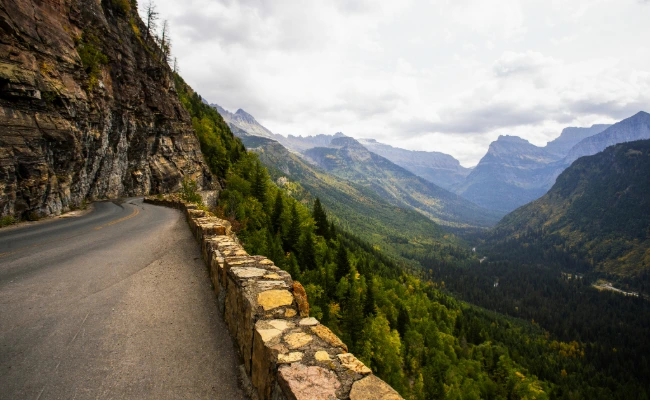
Important Tips:
Be prepared for changing weather conditions, even in the summer.
Start hikes early to avoid afternoon thunderstorms.
Respect wildlife and keep a safe distance from animals.
Gear to Carry:
Bear Spray: Essential for safety in bear country.
Layered Clothing: Weather can change rapidly; pack layers to stay comfortable.
Hiking Boots: Sturdy and waterproof for varied terrain.
Water Filter: Ensure access to clean water on long hikes.
Camera: Capture the stunning landscapes and wildlife.
External Reference Links:
10. Joshua Tree National Park
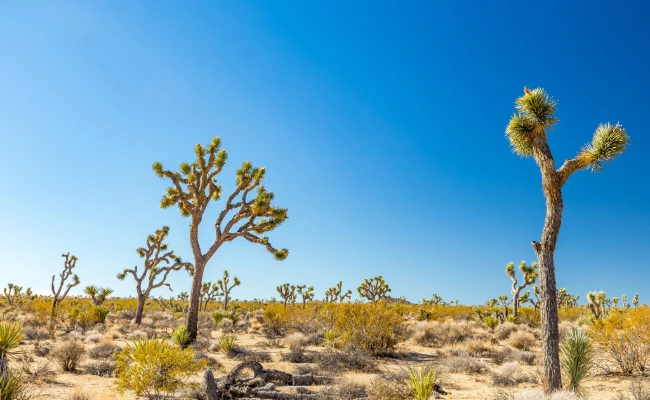
Location: California
Best Time to Visit: October to May
Why Visit: Joshua Tree is known for its unique desert landscapes, including the iconic Joshua trees and massive rock formations.
Details:
The park covers over 790,000 acres and offers a variety of activities, including hiking, rock climbing, and stargazing. The park’s unique flora and fauna, combined with its stunning desert scenery, make it a favorite destination for nature lovers. The park’s namesake Joshua trees, with their twisted branches, are a must-see and offer a unique photo opportunity. The park’s rock formations, including Skull Rock and Arch Rock, are popular destinations for hikers and climbers. The park’s night skies, with minimal light pollution, are perfect for stargazing and offer a chance to see the Milky Way in all its glory.
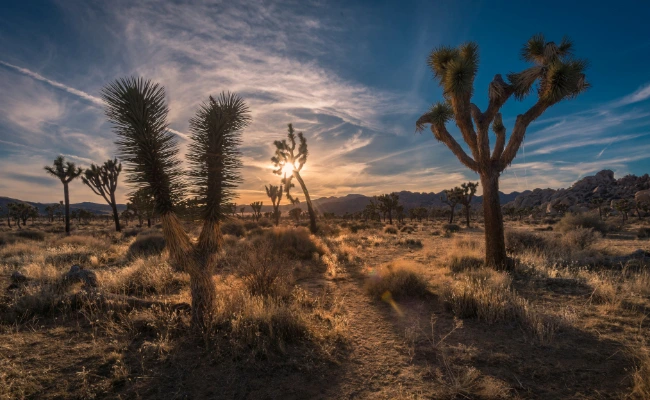
Important Tips:
Stay hydrated and wear sunscreen, as the desert climate can be harsh.
Visit during the cooler months to avoid extreme heat.
Explore the park’s night sky for some of the best stargazing in the US.
Gear to Carry:
Sun Protection: Hat, sunglasses, and sunscreen for sun protection.
Hydration System: Water bladder or bottles with a carrying system.
Climbing Gear: If planning to rock climb.
Lightweight Clothing: Breathable and quick-drying for hot weather.
External Reference Links:
Conclusion!
The United States is home to some of the most incredible national parks in the world, each offering unique experiences and breathtaking landscapes. Whether you’re exploring the geothermal wonders of Yellowstone, the towering cliffs of Yosemite, or the desert landscapes of Joshua Tree, there’s something for everyone in the best national parks to visit in the US. With this comprehensive guide, you’re now equipped with all the information you need to plan your next adventure.
So pack your bags, hit the road, and discover the natural wonders that await you in the best national parks the US has to offer.
Any questions or suggestion, please drop a quick message @techlifewell
